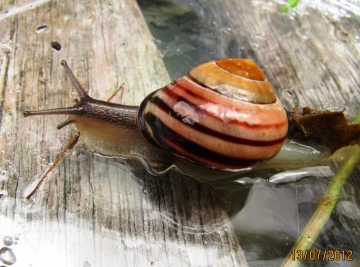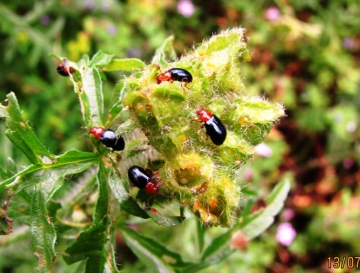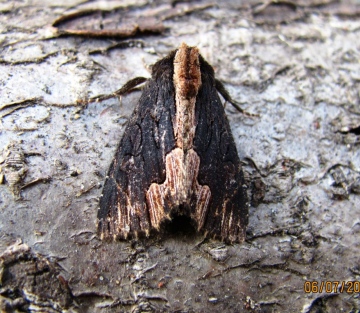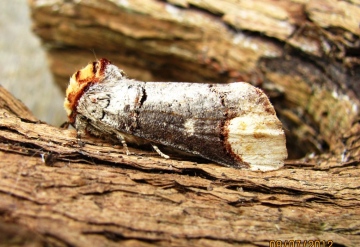Another species that is very common in the garden at the moment is this tiny beetle, which seems to feed in the flower-heads of a wide variety of species. I am sure it is up to no good but have no idea as to what it is. I'm sure a keen gardener like Mary will know though!
Have visited two gardens this week that are far posher than mine. The first of these - a pad belonging to someone I have a lot of time for - was Highgrove. This was truly my sort of garden; one that is soft round the edges with not a ruddy Dahlia or Pot Marigold in sight! I had expected to be shown round by someone in a green teashirt and wellies but the chap was more like the the butler! I particularly liked the artifacts made from redundant ecclesiastical stonework following restoration repairs - virtually every cathedral in the land seems to be represented there - and also the so-called Stumpery, although it was rumoured that Prince Philip inquired when the bonfire was taking place when he first saw it! After several years' maturity the wild flower meadow now looks completely natural and both Common Spotted and Southern Marsh Orchids have colonized it of their own accord. It is wonderful what you can do when you've got thirteen gardeners at your disposal but the ideas are all his of course. Both Dahlias and Pot Marigolds abounded in the second garden - Hampton Court. This is even posher.No houses in the surrounding area for under a million I would have thought. Henry V111 wouldn't be allowed to live there nowadays - he would lower the tone of the place. Still, it was a beautiful palace and there were plenty of other flower beds with insect friendly plants. Alas, there were very few insects to benefit from them, something I have noticed in many other places throughout this summer. Bees were in particularly short supply and I only saw a single butterfly all day even though, unlike Highgrove, it was not raining. The most colourful insects were several Banded Demoiselles which had wandered from the River Thames nearby.
The lack of aerial insects this summer probably explains why the young Swallows in the porch of the New Hide at Blue House died in the nest while still only half grown. On a previous visit the adults were feeding them but only at long intervals - despite the youngsters constant calls - and the likelihood is that they starved to death, a fate which, according to the BTO has befallen the young of many species this year.
On a more cheerful note, the milder nights of late has seen a marked increase in captures in my garden moth trap including these two striking species, a Bird's Wing and Buff Tip.
The latter is perfectly designed to imitate the broken tip of a small birch branch and that is where it resides throughout the daylight hours, relying on this camouflage to protect it from the hungry eyes of birds.



























